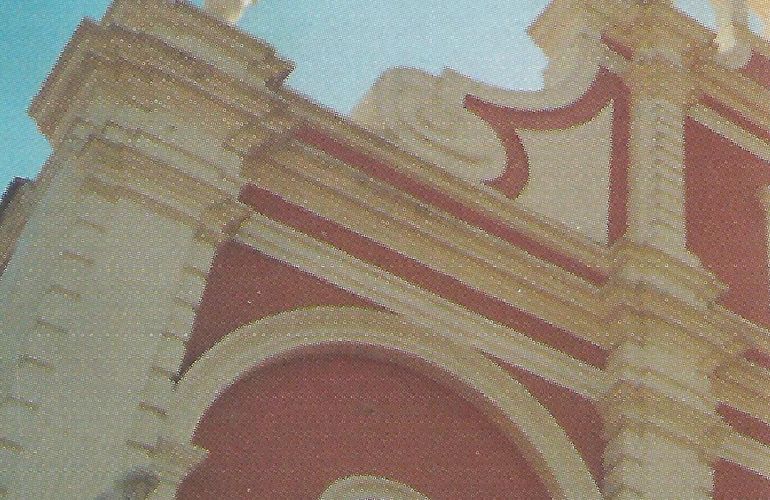Itinerary | Quito to Rio, Andes & Pampas
THE ROUTE – WEEK TO WEEK
Week 1: Ecuador: Quito, the start of our journey, is a beautiful heritage city nestled in the mountains. We cross the equator to the Otavalo Indian markets. Taking the mountain roads over the Andes we descend into the Amazon basin. At the river port of Misahualli on the Rio Napo; a tributary of the Amazon we stay in the jungle to canoe and walk with local guides to explore the eco system of the surrounding forests. You can try your hand at catching piranha.
Week 2: On the side of a nearly tame volcano is the spa town of Banos, which is popular with Ecuadorians who come to the hot springs. There are massive gorges and white water rafting on the rapids of the Rio Loco. At Alausi you can take the Devils Nose Railway down the mountain then on to Cuenca, an old colonial city.
Ingapirca is the first of the Inca stonework and ruins we see and are the most important Inca site in Ecuador. We leave the green highland of Ecuador and descend to the barren coastal deserts.
We enter Peru, the heartland of the Incas. On the Pacific Ocean desert coast surf beaches, and oasis towns. Here the locals still fish with traditional reed boats. We visit Chan Chan – a pre-Inca imperial city; the largest adobe city in the world surrounded by a nine-mile long wall.
Week 3: We visit Lima, which was the centre of the Spanish conquest of South America
The Nazca Lines are a series of enormous drawings of animals, geometric figures and birds. They seem as though they are drawn in the desert by a giant hand, from the air. Opinions as to their mysterious origins over 2000 years ago vary; from space craft landing sites to astrological calendars.
You can take a boat to the Ballestas Islands, to see the sea lion colonies and penguins.
Week 4: We leave the coast and climb into the Andes to Chivay Hot Springs. To Arequipa a beautiful colonial town overlooked three old volcanoes. On the fields by the road, we see Llamas also their relatives the Guanaco, Alpaca and Vicuna. The Colca is the deepest canyon the world, we stand on the edge and watch Condors soar above us on the thermals, rising from below.
Week 5: We drive across remote passes in the Andes to Cusco, the Incas Holy city; it’s the archaeological capitol of the continent. The Spanish colonial buildings are built on the indestructible foundations of the vanquished Inca. We spend time among the ruins of the Sacred Valley of the Incas. You can hike for four days along the Inca Trail to Machu Picchu, or if you prefer take the train in a day.
Our last stop in Peru is Lake Titicaca we take boats to visit the Indians living on floating reed islands on the lake. Still on the lake we enter Bolivia to the islands of the Sun and Moon, where the Incas believe they were created.
Week 6: Set dramatically against the mountains, high in the Andes, at 2,100 feet is La Paz a magnificent Andean Indian city, surrounded by snow-capped mountains.
We cross the stark, high country of the Altiplano and Potosi where a tour of the silver mines is a must. Mining is still carried out deep into the earth as it has been for over 400 years since the Spanish opened it.
The Uyuni Salt Pan is the largest in the world and so is the biggest slab of salt in the world; ten billion tons of it. In the dry season you can hire jeeps for 2 days to cross it.
We cross the border of Argentina, first visiting the city of Salta and on to Cafayate and Mendoza. In this wine growing area you can do a wine tasting tour on push bikes.
Week 7: We leave the Andes and cross the Sierras de Cordoba to the city of Cordoba. Cordoba has many Colonial areas to explore including the UNESCO World Heritage Jesuit Block, dating back to the 17th and 18th centuries. Optional excursions are available to visit various Jesuit Estancias, where the first vineyards of South America were planted in the 16th century.
We cross the vast Pampas or grassland plains. Its South America’s cowboy country, here gauchos, the national symbol of Argentina, on horseback herd their cattle.
Buenos Aires, we have a couple of days here to eat steak till you moo, go night clubbing and drink till you dance the Tango.
Uruguay Optional ferry across the River Plate for a visit to Montevideo.
Week 8: We follow the Parana River, to the Jesuit Missions; which were built in an attempt to save the Indians, these mission stations featured in the film The Mission with Jeremy Irons.
Week 9: We enter Brazil at Iguassu Falls the border between Argentina, Paraguay and Brazil, Iguassu Falls is one of the biggest waterfalls in the world, spreading over hundreds of cascades. There are rainforest walkways below the falls and boats dart into the cascades below. Here you can go on optional activities; rafting and helicopter flights.
Week 10: From Foz do Iguazu we reach Curitiba, Curitiba has something of a European feel and hosts the start to one of the world’s most spectacular railway journeys. We have a free day to climb aboard this very train to Paranagua crossing deep gorges, high peaks and waterfalls as the train winds its way over bridges and viaducts. Parati on the Atlantic Coast, relaxed historic coastal village without cars, take a schooner to the nearby islands.
Rio de Janeiro, Carnival & New Year’s Eve celebrations are great times to be here and party.
Other sights in Rio are the statue of Jesus Christ overlooking the city, map-like below, and the famous Copacabana & Ipanema Beaches.

-5d4036e207d9f_adaptiveResize_770_500.jpg)